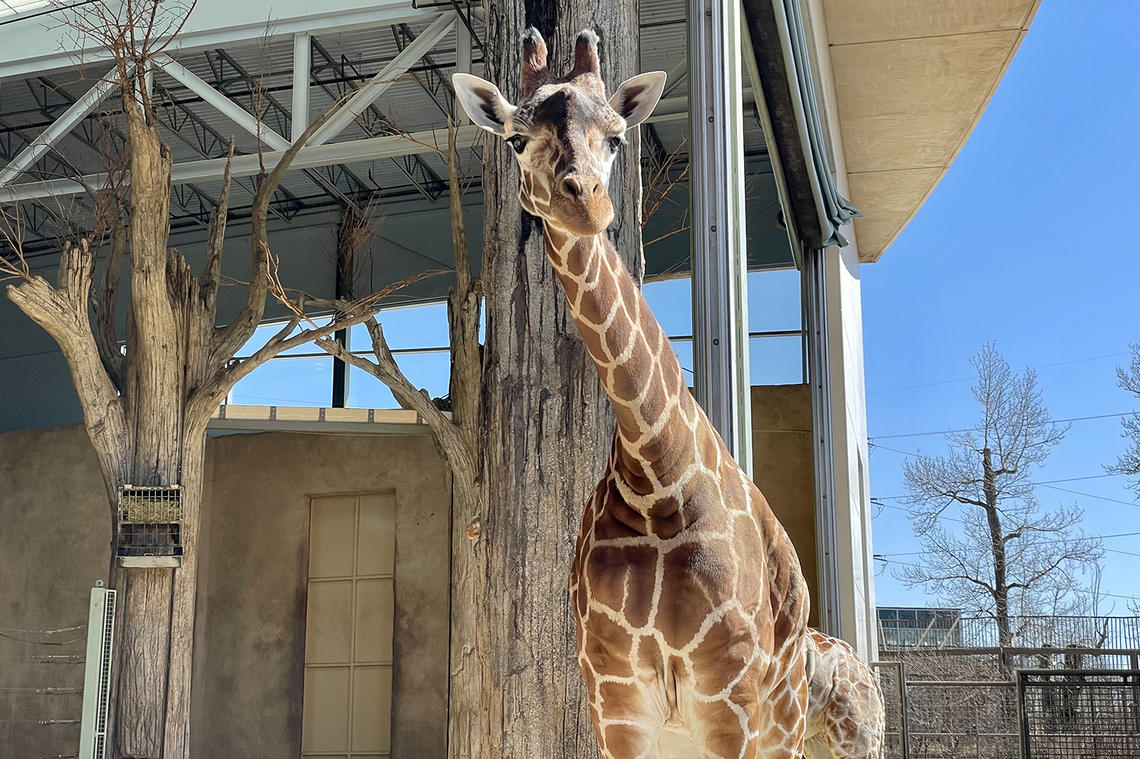April 12, 2022
Lifelong love of animals and wild spaces culminates in appointment as head veterinarian at Calgary Zoo

For many people, a trip to the zoo is fun day of visiting a myriad of exotic animals, learning some interesting facts about various species, and maybe a stop at the gift shop on the way out. But behind the scenes, there’s a largely unseen team of experts safeguarding the health and well-being of every creature there and doing important wildlife conservation work.
Now in charge of that team is Dr. Doug Whiteside, DVM, a board-certified zoological medicine specialist and passionate advocate for animal welfare.
“One of the most exciting things about this new role is being able to make more significant contributions to animal welfare, to species conservation, and to research that bridges the knowledge gap between wildlife under human care and wild animals that are free ranging,” says Whiteside. He is also an associate professor at the University of Calgary Faculty of Veterinary Medicine, where he educates future veterinarians in zoo and conservation medicine.
So, what’s it like balancing the two jobs?
“It’s very busy,” says Whiteside with a laugh. “It keeps me on my toes, but I thoroughly enjoy it.”

Doug Whiteside and his team care for creatures great and small — and tall — at the Calgary Zoo.
Alexandra Seidman, University of Calgary
Caring for — and researching — all creatures great and small
Over his almost 21-year career at the zoo (which has been newly rebranded the Wilder Institute/Calgary Zoo to better reflect its critical wildlife conservation work), Whiteside has provided care to everything from fish to giant pandas, frogs to giraffes and hippos, and to a soon-to-be-mom gorilla named Dossi. As well as his clinical work, he is extensively involved in collaborative research projects focused on advancing species conservation and animal welfare.
“More and more the zoo's goal is to run a world-class zoological facility, where people can connect with animals and nature, but also to really improve the level of conservation work we do beyond the walls and the science behind that conservation work,” says Whiteside. “And I’ve been able to engage UCVM students, both from an undergraduate and graduate student aspect on those research projects, which is wonderful.”
Whiteside also is excited by the development of UCVM’s new Wildlife Health Fund. This will allow for future growth of collaborative wildlife health research at the university.
Teaching and mentoring the next generation of veterinarians

Doug Whiteside and fourth-year vet med student Kaleigh Eichel work on a research project at the zoo looking at applying focused point-of-care ultrasound techniques to snakes.
Courtesy Doug Whiteside
In his role as associate professor, Whiteside infuses zoological medicine into courses and clinical skill labs in the first three years of the veterinary program and co-ordinates the UCVM-Calgary Zoo internship in zoological medicine.
He’s also a primary instructor for students in fourth-year clinical rotations at the zoo — an amazing experiential learning opportunity where students spend four to six weeks living the life of a zoo vet.
“They are immersed into zoological medicine and surgery, conservation programs, and pathology. And we have them participate in as much hands-on work as possible,” says Whiteside. “Any time we have animals anesthetized, they're right in there helping to monitor anesthesia, do physical examinations, collect blood, and learning how to do different procedures.”
The zoo and the University of Calgary have had a long-standing partnership, right from the beginning when UCVM was just a concept.
“It’s been a natural synergistic progression. When I came on full time in the veterinary faculty, the zoo remained as my clinical home. Now, in my new role I hope to make even more of an impact that will benefit both organizations.”
This month, your support can help propel wildlife health forward with double the impact! From now until April 21, eligible donations up to $2,500 will be matched, dollar for dollar (while matching funds last). Double your impact by giving here to UCVM’s Wildlife Health Fund today!





